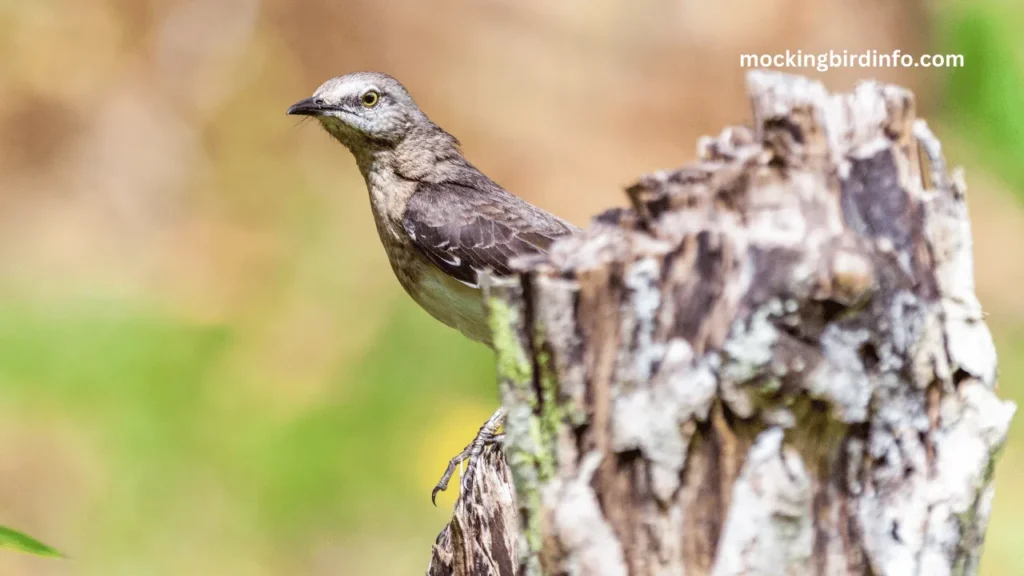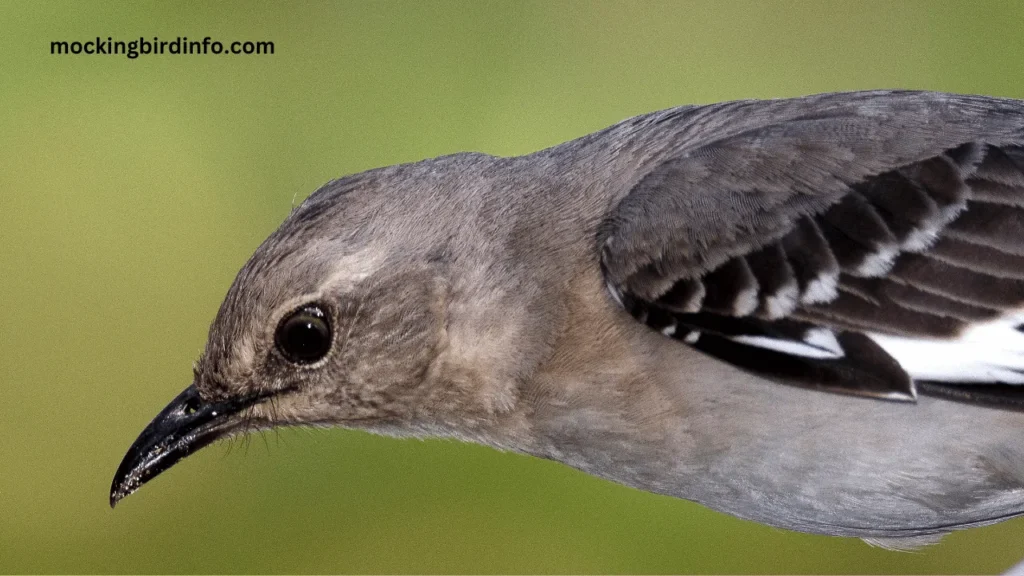Have you ever observed a mockingbird singing its heart out on a fence or perched on a tree branch, only to notice a companion nearby? The sight of these elegant birds interacting often sparks curiosity about their behavior.
Are they merely sharing space, or is there something deeper at play? Mockingbirds, with their striking songs and vibrant personalities, often seem like creatures of routine. But when it comes to their mating habits, there is more than meets the eye.
While these birds are known for forming strong pair bonds, the truth about whether mockingbirds mate for life is far from simple.
In this article, we’ll dive into the fascinating world of mockingbird pair bonding and explore whether these birds truly engage in lifelong monogamy. It’s common to see mockingbird pairs stay together through a single breeding season, but what happens when that season ends?
Are they committed to each other year after year, or is their bond simply seasonal? While many birds are strictly monogamous, mockingbirds may break the mold by engaging in extra-pair copulations, making their relationships more complex than most would assume.
We will explore the various factors influencing mockingbird relationships, the benefits and challenges of monogamy, and the role of extra-pair copulations in their reproductive success.
By the end of this article, you’ll not only understand how mockingbirds form their pair bonds, but you’ll also appreciate the intricate balance of loyalty, competition, and survival that defines their fascinating mating system.

Contents
- 1 Pair Bond Formation
- 2 Costs
- 3 Extra-Pair Copulations
- 4 Reproductive Success and Parental Care
- 5 Conclusion
- 6 Frequently Asked Questions (FAQs)
- 6.1 1. Do mockingbirds mate for life?
- 6.2 2. What factors influence mockingbird pair bonding?
- 6.3 3. Why do mockingbirds engage in extra-pair copulations?
- 6.4 4. What are the benefits of monogamy for mockingbirds?
- 6.5 5. What are the costs of monogamy for mockingbirds?
- 6.6 6. How does extra-pair copulation affect mockingbird reproduction?
Pair Bond Formation
Mockingbird pair bonding is often seasonal, lasting for the duration of the breeding season. These birds typically come together during the spring when the need to mate and raise offspring is most pressing.
While some pairs may remain together beyond the breeding season, their bond isn’t typically lifelong. The structure of mockingbird relationships is largely determined by environmental and social factors, making each mating season unique.
Habitat Quality
High-quality habitats are essential in the formation of mockingbird pair bonds. These birds thrive in areas with abundant food, suitable nesting sites, and territorial boundaries.
A mockingbird pair is likely to form when these resources are plentiful, ensuring both partners have what they need for survival and reproduction. Habitat quality directly affects their ability to maintain a strong pair bond, as a lack of resources can force pairs to separate.
Social Factors
Social interactions play a crucial role in the formation of mockingbird pair bonds. Territorial defense and courtship displays are key components of this process. Male mockingbirds engage in elaborate songs and showy displays to attract potential mates, signaling not only their physical condition but also their ability to defend a territory.
Female mockingbirds, in turn, assess these behaviors to determine the suitability of a mate. The quality of social interactions during this period influences the strength and stability of the pair bond.
Individual Quality
The individual fitness of each mockingbird is also a significant factor in mate choice. Females tend to select mates based on indicators of physical health and genetic quality. This includes the male’s ability to produce impressive songs and defend his territory.
Males, in turn, choose females that show signs of good health and reproductive potential. A strong individual bond is often a result of these physical and genetic assessments.
Benefits and Costs of Monogamy
Monogamy offers several advantages to mockingbirds, but it is not without its costs. Staying with a single mate can provide increased chances of offspring survival and reduce competition for resources.
However, there are also trade-offs, such as the opportunity cost of missing out on potential mates and the risk of infidelity within the pair bond.
Benefits
One of the primary benefits of monogamy for mockingbirds is increased paternal care. When a male remains with a single female, he is more likely to provide consistent care for the offspring, helping ensure their survival.
This includes protecting the nest, feeding the young, and defending against predators. This shared responsibility increases the likelihood that both parents can contribute to the survival of their genetic material.
Monogamy also reduces competition for mates and resources. In a situation where both partners are committed to each other, they are less likely to engage in aggressive competition with other individuals. This stability helps ensure that the pair can focus on raising offspring without being distracted by mate competition or territorial disputes with outside birds.

Costs
Despite its benefits, monogamy has its downsides for mockingbirds. The most significant cost is the opportunity cost of forgoing other potential mates. By remaining faithful to one partner, mockingbirds may miss the chance to mate with other individuals that could offer superior genetic traits or access to better resources.
This limitation can affect their overall reproductive success. Another cost of monogamy is the risk of infidelity. Some mockingbirds engage in extra-pair copulations, mating with individuals outside their primary pair bond.
This behavior can lead to reduced reproductive success, as it may result in conflicts or strain the resources available for raising offspring.
Extra-Pair Copulations
Extra-pair copulations are a fascinating aspect of mockingbird behavior. While many birds engage in strictly monogamous relationships, mockingbirds often break these norms by mating outside of their primary pair bond.
These extra-pair copulations allow mockingbirds to diversify their genetic pool and improve their chances of reproductive success.
Definition
Extra-pair copulations refer to mating that occurs outside of the primary pair bond. Despite being partnered with one mate, a mockingbird may seek out other individuals to mate with during the breeding season. These copulations often happen discreetly, and the offspring produced may not always be recognized by the primary mate.
Motivations
The motivations for engaging in extra-pair copulations are rooted in genetic benefits. By mating with multiple partners, mockingbirds increase the genetic diversity of their offspring.
This increases the chances of survival, as offspring with diverse genetic backgrounds are often more adaptable to environmental challenges and diseases. Extra-pair copulations may also be driven by a desire for better reproductive opportunities or access to superior resources.
Consequences
While extra-pair copulations can enhance genetic diversity, they come with consequences. These behaviors can lead to increased competition within social groups and create conflict between primary mates.
Male mockingbirds, for instance, may face the challenge of raising offspring that are not genetically their own, leading to tensions and potentially reducing the overall fitness of the pair. This complexity highlights the delicate balance between loyalty, survival, and reproduction in mockingbird behavior.
Reproductive Success and Parental Care
Mockingbirds exhibit significant parental investment, with both parents contributing to the care of their young. This biparental care ensures that the offspring have the best chance of surviving the early stages of life. Both the male and female work together to incubate the eggs, feed the young, and protect them from predators.
Parental Investment
Parental investment is critical to the survival of mockingbird chicks. Both parents share the duties of incubating the eggs, feeding the chicks after hatching, and keeping them safe from predators. This cooperative effort increases the likelihood of chick survival, as both parents can focus on specific tasks and provide the necessary resources.
Biparental Care
The benefits of biparental care are clear in mockingbird reproduction. Having both parents involved in raising the young ensures that the offspring are well-fed and protected. This increases the chances of survival in an environment filled with threats from predators and competition for food. Biparental care also provides the young birds with more learning opportunities and socialization with their parents, which is essential for their growth.
Extra-Pair Paternity
Extra-pair paternity can influence reproductive success in mockingbirds. When a male participates in extra-pair copulations, the offspring produced may have higher genetic fitness, making them more resilient to diseases and environmental changes. This strategy can increase the overall reproductive success of the pair, even if the male is not the biological father of all the chicks in the nest.
Conclusion
In summary, mockingbirds form strong pair bonds, but their mating system is more complex than simple monogamy. These birds may stay together for a single breeding season, but they also engage in extra-pair copulations to increase genetic diversity and reproductive success.
The factors influencing pair bond formation, the benefits of monogamy, and the role of extra-pair copulations all play a part in their overall reproductive strategy. Understanding the mating behavior of mockingbirds is essential for effective conservation efforts.
As we learn more about their complex mating systems, we can better protect their habitats and ensure that they continue to thrive in the wild. Mockingbird behavior is a reminder that nature’s intricacies are not always as straightforward as they seem.
The world of mockingbird mating is one filled with intrigue, competition, and cooperation. By studying their relationships and reproductive strategies, we gain a deeper appreciation for the complexities of bird behavior and the ways in which animals adapt to their environments to ensure survival.
Frequently Asked Questions (FAQs)
1. Do mockingbirds mate for life?
No, mockingbirds typically form seasonal pair bonds, lasting only for the duration of the breeding season. While some pairs may stay together longer, they are not strictly monogamous.
2. What factors influence mockingbird pair bonding?
Habitat quality, social interactions, and individual fitness play significant roles in the formation of mockingbird pair bonds.
3. Why do mockingbirds engage in extra-pair copulations?
Extra-pair copulations help increase genetic diversity and reproductive success by allowing birds to mate with individuals outside their primary pair bond.
4. What are the benefits of monogamy for mockingbirds?
Monogamy leads to increased paternal care and reduced competition for mates and resources, improving the survival of offspring.
5. What are the costs of monogamy for mockingbirds?
The opportunity cost of monogamy is that birds miss out on the chance to mate with other individuals, potentially limiting their genetic fitness.
6. How does extra-pair copulation affect mockingbird reproduction?
Extra-pair copulation can lead to higher genetic diversity and increased reproductive success, but it also creates competition and conflict.








